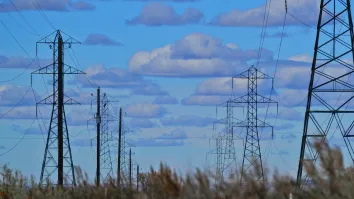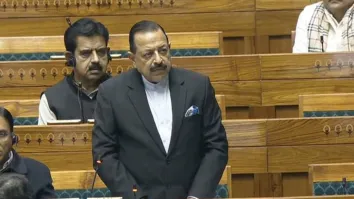Unlocking the potential of solar water solutions
By Chee Meng TanThe world has woken up to the vast potential of renewables with nations across the globe ramping up their efforts to switch to renewable fuel sources to reduce carbon emissions and combat climate change. In fact, two-thirds of the world’s new generation capacity in 2018 came from renewables, with solar energy continuing to be the fastest growing renewable.
Whilst the role of solar energy in reducing carbon emissions is well-understood, its potential to fight climate change and build a sustainable future goes beyond that. A critical climate change mitigation strategy and sustainability goal that solar energy can help realise is ensuring water access for all.
The threat of water running out is more present than ever for Asia with water demand forecasted to increase by 55% in Asia by 2050, thanks to a rapidly increasing population. Meanwhile, the usable water supply is shrinking amidst rampant pollution and extreme weather events such as droughts. According to a recent study by MIT researchers, an additional 200 million people across Asia would be vulnerable to severe water shortages by 2050.
Ensuring a secure and sustainable supply of water for all is a highly complex and multi-faceted issue. On one hand, many remote locations in the region lack the infrastructure and energy needed to access water. On the other hand, many developing areas with access to water resources are unable to pay for clean water.
One way to address both the accessibility and affordability challenge is to use solar energy to power water processes. This will help ensure that everybody, regardless of their financial status or geographic location, has access to this precious resource that is necessary for the sustenance of life.
Accessing water in remote locations
For those living in urban cities around the world, it is easy to take electricity for granted. However, for those living in developing countries across Southeast Asia, as high as 82% of rural communities do not have electricity.
Access to electricity has a direct impact on living standards, as it could determine whether one has the ability to get clean water or not. Today, there are still many remote areas that lack the infrastructure to generate enough power to transport water, which calls for a system that is both efficient and sustainable.
To tackle Asia’s electrification challenge, solar energy can be used to power water pumping stations in these remote locations. With the required energy, the pumping stations can then draw water from various sources to meet the needs of families and communities.
A case in point is the Kahiyangan village on Pulau Tomia in Indonesia, which grappled with water shortage for over 20 years. The water source for the village was a cave three kilometres away that could only be accessed by traversing extreme terrains. With low levels of income, its villagers could not afford traditional water pumping systems that are powered by fossil fuel and require infrastructure support.
To tackle this challenge, an irrigation and sinewave filter system with a renewable solar inverter was installed in the village, powered by 144 solar panels. The off-grid solar inverter harnesses solar energy and converts the DC power output from the solar panel to AC power supply for pump operations. The system pumps water into a water tank, drawing 100,000 litres of water from the cave a day, providing clean water to around 1,000 people across two villages. The inventive use of solar energy also means that there is no operation cost involved in building electricity infrastructure.
Keeping water affordable
The water crisis is not just about water scarcity or extreme water-related weather events. It is also about the affordability of clean water.
Water treatment and distribution comes with a price tag and hence, access to clean water is tied to people’s ability to pay for it. In a world struggling with widening income inequality, not everybody has the means and ability to pay for this basic resource. This directly contravenes SDG 6 that calls for universal and equitable access to safe and affordable drinking water for all.
It is crucial that we explore solutions that reduce the cost of water infrastructure and operations to bring down water prices. Pumping water using solar power, which is becoming more and more cost-effective, is an ideal solution to this issue.
According to the International Renewable Energy Agency, the cost of solar photovoltaic electricity has fallen by 73% between 2010 and 2017. By 2020, the renewable power generation technologies now in use will be at the lower end of the fossil-fuel cost range, or even cheaper than fossil fuels. Moreover, solar power also has no maintenance and energy costs as it does not require any outside supply of fuel to run.
A success story is the rural district of Can Duoc in the Mekong River Delta region of Vietnam, which struggled with a lack of access to clean water despite being surrounded by rivers and canals. The water sources were polluted by heavy metals, chemicals and bacteria, and installing a pipeline to treat and deliver clean water to the scattered communities required a comprehensive network and significant investment. Unable to raise enough funds to build a water treatment plant, families in the rural district had been lacking in clean water for 40 years.
With donations from the private sector, a new water treatment plant, partially powered by solar arrays and a solar control panel, was built in the district. The solar technology has been instrumental in saving energy for the pumping station whilst lowering operating costs - up to one-third of the electricity bill - for the investors. More importantly, this innovative solar-powered water treatment solution now serves 3,000 households in Can Duoc, delivering safe water to the communities.
The path ahead
In order to address the water accessibility and affordability issues in the region, industry players and the government need to work together and make sure that standalone off-grid initiatives continue to be rolled out. This will go a long way in helping to provide viable means of access to electricity, and therefore basic resources such as water at affordable rates.
Solar-powered pumps beckon a new era of water solutions and will play a pivotal role in powering reliable water access in the region. But the potential of solar energy in providing water access goes beyond the developing world. Thanks to increased efficiency, cost-effectiveness, and capacity, solar energy can be used for a wide range of industrial and agricultural applications across the globe.
Today, investing in solar energy not only has environmental benefits but also makes business sense with the energy and cost savings it offers. To optimise its potential, industry players need to innovate and develop technologies that can support larger projects and provide more efficient pumps and solar power systems.




















 Advertise
Advertise






